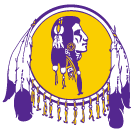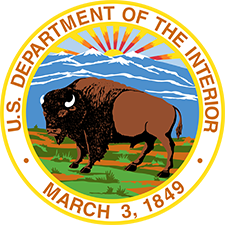Our History

Establishment and Evolution of the School Building
Sherman Indian High School's origins date back to 1890, when the Commissioner of Indian Affairs tasked Horatio N. Rust with identifying a site for an Indian training school in Southern California. By 1892, the first such school was established in Perris, California, on the corner of Perris Boulevard and Morgan Street. The modest campus included a school building facing Perris Boulevard and a dormitory behind the palm trees on Morgan Street.
This initial location primarily served students from California Indian Tribes, alongside eight Pima students from Arizona. However, the limited water supply in Perris led Superintendent Harwood Hall to seek a better site. With the assistance of James Schoolcraft Sherman, Chairman of Indian Affairs and future Vice-President of the United States, funding was secured to relocate the school to Riverside, California. In 1900, Congress authorized $75,000 for its construction, and the cornerstone of the new campus was laid on July 18, 1901.
By May 1902, the newly named Sherman Institute opened its doors on its current site with nine buildings. Over the following decades, the campus expanded significantly, reaching 34 buildings by 1908. By 1970, some original structures, including the old school building, were deemed structurally unsafe and were razed. The old cornerstone was preserved and housed in the Sherman Museum, which is today a testament to the school’s rich history.
In 1971, the school was re-accredited as a comprehensive high school and officially renamed Sherman Indian High School, a title chosen by the senior class of 1969.
The Learning Environment at Sherman Indian High School
Sherman Indian High School has always been more than just an academic institution. The school sought academic and practical training from its inception, offering programs that balanced classroom instruction with hands-on learning. In the early 20th century, students were immersed in subjects like carpentry, cabinetmaking, agriculture, and home economics alongside traditional academic coursework. The Sherman Farm, a 110-acre property near Home Gardens, served as a food source and a training ground, illustrating the school’s emphasis on self-sufficiency and practical skills.
The introduction of the “outing system” in the early 1900s extended the school’s educational reach, providing students with opportunities to work and learn outside the campus. By the 1920s, Sherman offered a full elementary and high school curriculum, including specialized courses such as cosmetology.
While enrollment declined during the Great Depression, the school found a new purpose in 1946, launching a special program for Navajo students who had never attended formal schooling. This program ran for over 15 years, adapting the curriculum to meet the unique needs of its students. In 1963, Sherman reinstated a comprehensive high school program and expanded it to include students from a wide array of Tribes.
Sherman Indian High School continues its tradition of providing a well-rounded education that honors academic excellence and cultural heritage. Students are encouraged to embrace their Tribal identities while preparing for the future, making the school a unique environment where tradition and progress coexist.
A Diverse Community of Native Tribes
Sherman Indian High School is a gathering place for Native youth, representing over 76 federally recognized Tribes across the United States. While its early days saw primarily California Tribes on its rolls, the school quickly expanded its reach. By 1909, the student body included members of Tribes from the Pacific Northwest, the Southwest, and the Plains.
The diversity of Sherman’s student population enriches the campus experience, fostering an environment where traditions and stories from different Tribes converge. Students at Sherman share their academic pursuits and cultural practices, from traditional dances to storytelling, creating a vibrant tapestry of Native American heritage.
The school also celebrates its cultural identity through events and the preservation of artifacts in the Sherman Indian Museum. This museum houses over 2,000 cataloged items, including objects of American Indian origin donated by friends of the school. Through the museum, students and visitors alike gain a deeper understanding of the histories and cultures that make up Sherman’s diverse community.
Connections to Other Communities
Sherman Indian High School’s influence extends far beyond its Riverside campus. Since its inception, the school has deeply connected to Native and non-Native communities. In its early years, Sherman served as a model for Indian education, demonstrating how vocational and academic training could be integrated to prepare students for life beyond school.
Today, Sherman continues to build bridges with other communities through cultural exchanges, partnerships and public outreach. The Sherman Indian Museum, designated as Riverside Cultural Heritage Landmark Number 16 in 1974 and added to the National Register of Historic Places in 1980, is a focal point for these connections. The museum’s recent digitization project, funded by a grant from the University of California at Riverside, ensures its collection will be accessible to a global audience, preserving Sherman’s legacy for future generations.
Through its outreach programs and alumni network, Sherman maintains strong ties with Tribes across the country, reinforcing its role as a center for Native education and culture. As it continues to evolve, Sherman Indian High School remains a beacon of hope and a symbol of the enduring strength and unity of Native American communities.



